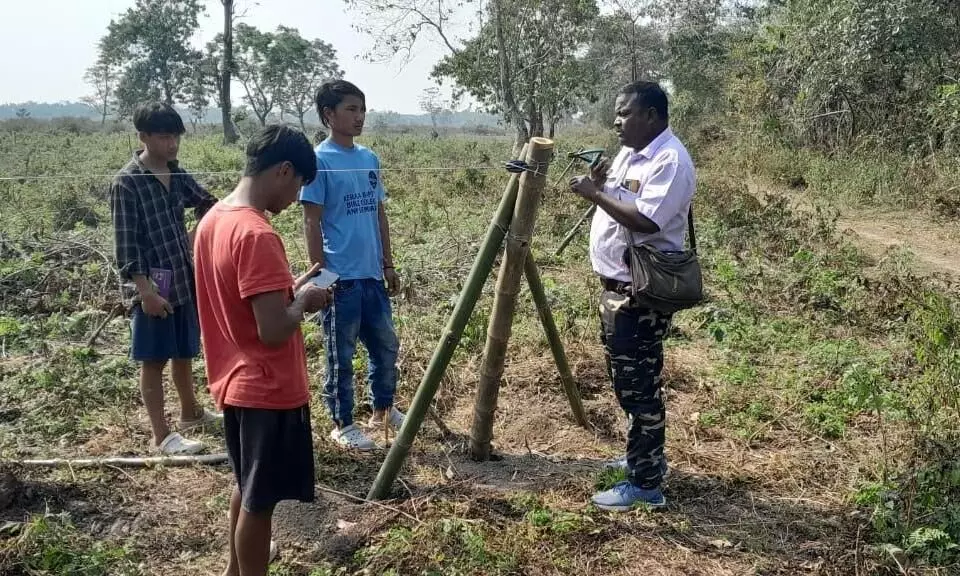Solar fences installed to foster human-elephant coexistence at Raimona National Park

Guwahati, Feb 25: In a bid to provide respite from human-elephant conflict (HEC) to 870 households, an 11-kilometre-long solar-powered fence covering 17 villages has been installed on the fringes of the Raimona National Park in Kokrajhar district of Assam.
The solar fence has been installed in two phases by the research-oriented biodiversity conservation organisation Aaranyak as part of its continued efforts to facilitate human-elephant coexistence using a solar-powered fence as a tool for mitigation of the raging conflict between the two species in certain parts of Assam and Meghalaya.
The solar fence to protect these villages has been installed with support from the U.S. Fish and Wildlife Service (USFWS) and in collaboration with the local community and Forest Department of Bodoland Territorial Region (BTR), Assam.
These fences are managed by the community members who are trained on solar fence maintenance and monitoring by the Aaranyak resource team prior to the installation. A 6.55 km long solar-powered and single-wire electric fence was installed to protect 600 households in 11 villages on the fringes of the Raimona National Park -- Takampur, Pulodabri, Araisopara, East Takampur, Santipur, Bharatpur, Bharatnagar-Adivasi Basti, Susilpur, Baganpara, Nepalipara and Nabin Nagar, all under Kachugaon Block. The fence installation work, which started on January 29 with the erection of posts and clearing of weeds, was completed on February 12.
Earlier, Aaranyak, in the first phase, had installed a 4 km-long single-wire solar electric fence covering six fringe area villages of the national park to protect 270 households in the month of August last year in the western zone. The villages covered under the first phase of fence installation included Dom Bazar, Hazariguri, Nandipur-1, Nandipur-2, Gwajanpur and Lotamari-1.
The villages are dominated by the indigenous Bodo tribe.
During the fence installation process, the members of the local community whose crop fields and dwelling places have been protected by the solar fence from wild elephants played an important role by contributing posts and labourers required for the purpose.
The Aaranyak team, comprising Anjan Baruah, Jibon Chetry, Dibakar Nayak, Bijoy Kalita, Rupam Gayari and Ripunjoy Nath, were involved in implementing both the phases of the Raimona community-managed solar fence.
The total length of the solar fence on the fringes of the RNP has now added up to 17.05 km, as WWF had earlier installed another fence of 6.5 km length to protect six fringe villages and 298 households: Santipur (39 houses), Hadanpur (14 houses), Golcipara (45), No.3 Rupnathpur ( 127 houses), Bathawguri (28) houses), Takanpur (45 houses).
